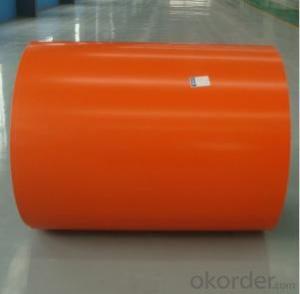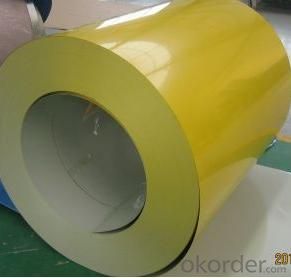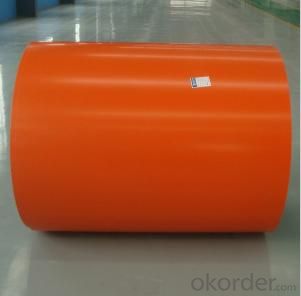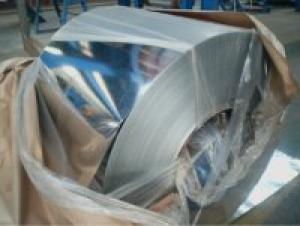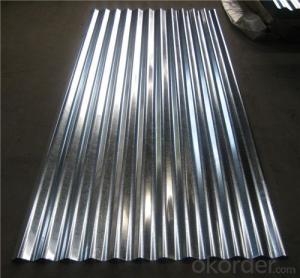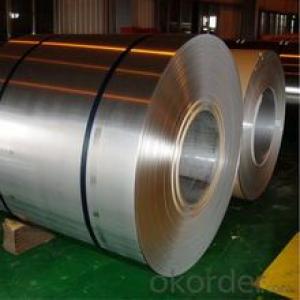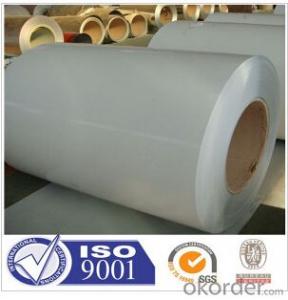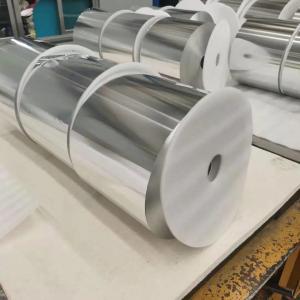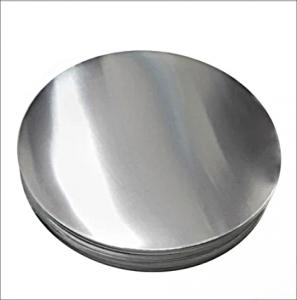430 Stainless Steel Color Coated Zinc Steel Coil Plate/Sheet
- Loading Port:
- Shanghai
- Payment Terms:
- TT or LC
- Min Order Qty:
- 30 m.t.
- Supply Capability:
- 20000 m.t./month
OKorder Service Pledge
OKorder Financial Service
You Might Also Like
Basic Info.
Model NO.:SC-001
Surface Treatment:Coated
Grade:Galvanized or Gavalume
Width:914, 1000, 1200, 1219, 1220, 1250
Treatment:Galvanized or Gavalume
Color:Ral Standard, or Buyer′s Sample Color
Zinc Coating:40-150GSM
Length:up to The Thickness
Base Material:Steel
Lacquer:Top Side15-25 Micro, Back Side 5 Micro
Surface:Passivation Unoiled Free Spangle Passivated
Export Markets:Global
Additional Info.
Trademark:STW or OEM
Packing:Export Seaworthy Packing
Standard:JIS G3312 / CGCC
Production Capacity:20000 Metric Tons/Month
Specifications;
1. Aluzinc coating mass: 30g-275g/sqm
2. Coil weight:4-6 tons per coil
3. Edge treatment: Mill edge or cut edge.
4. Technical treatment: Bright annealed, flatting, cold harden.
5. Surface treatment: Annealed, bright finish, dull/bright finish, slit edge.
6. Spangle: Normal/small/big/zero spangle.
7. Delivery terms: FOB / C&R / CIF
8. Supply Ability: 20000MT/month
9. Application: The construction industry: The roof structure, keel, grill, Clapboard, ceilings, fire shutter doors, etc; The light industry, the Automobile, agriculture, animal husbandry, fishery, casing of household Electronic application, civilian smoke stack, etc.
10. Delivery time: Within 30 days after the receipt of L/C or Signed the contract or according to customer's requirement.
Special design available according to requirement; Anti-corrosion And high-temperature resistant with black painting; All the production process Are made under the ISO9001: 2000 strictly
Package: Sea worthy Export Packing Standard export and seaworthy packing. (waterproof paper and metal sheet protection with fluted rings at inner and outer edges, 4 eye bands and 4 circumferential bands fasten the coil)
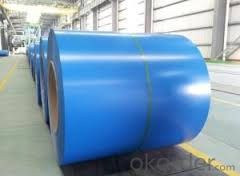
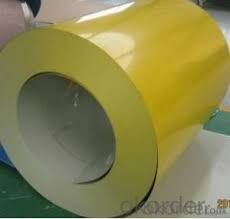
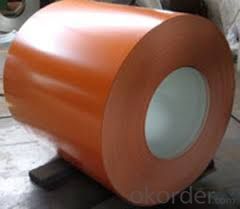
Color-coated plate, color steel plate industry and said, color plate. Color coating is based on cold-rolled steel sheet and galvanized steel sheet substrate, after surface preparation (degreasing, cleaning, chemical treatment), painted with paint in a continuous way (roller), made after baking and cooling products. Coated with light, beauty and good corrosion resistance and direct processing, construction, shipbuilding, vehicle manufacturing, the furniture industry, the electrical trade and provides a new raw material, steel instead of wood, was efficient construction, energy conservation, pollution prevention and other good results. Pickled hot-rolled sheet is made of high quality as raw material, the pickling removes oxides, trimming, and after finishing, surface quality and requirements (mainly cold forming or stamping performance) between the intermediate product between hot-rolled sheet and cold-rolled sheet, is part of the hot-rolled sheet and cold-rolled sheet ideal for alternative products. Whose material is hot rolled coils cold rolled coil, rolling below the recrystallization temperature at room temperature, and include sheets and coils, many domestic steel mills such as Baosteel, WISCO, angang is can be produced. Delivery known as steel, also known as sheet or flat; the length of a long delivery, into a volume called steel, also known as coil. Galvanized sheet refers to the surface with a layer of zinc-plated steel. Zinc is an economical and effective corrosion protection methods are often used. About half of world production of zinc is used for this process. galvanized steel sheet is for protecting steel surfaces from corrosion to extend its service life, in steel sheet coated with a layer of zinc metal, this referred to as galvanized zinc coated steel plate.
- Q:I want to build an indoor riding arena, should I go for Steel ones.
- Though okorder /.. You can also have a look!!
- Q:I downloaded broken steel, the notice of my level cap raising was shown, but after reaching the Jefferson Memorial (when you are supposed to activate the purifier) if I kill Colonel Autumn, then Lyons simply says that we must secure the area, and I can't complete the mission. If I let Autumn live, then she gets stuck in a loop saying Steel be with you over and over. Has anyone else experienced this/how can I fix this? I paid $10 for the expansion and I'm getting ripped off.
- for my area i've got in no way stricken with achievements. Hell, i've got in no way logged into domicile windows stay in six months for the reason that this game got here out. i do no longer even have the disk in my laptop. I merely launch by FOMM and FOSE. you already know what achievements i like, making mods. human beings love a number of my mods, and to me this is a real success. the sport is merely game, enjoying it would not recommend something, this is different from you lived in SE Asia for 6 months in a shack with out working water with a warm distant places female you met on line and then introduced her and your toddler back to stay inclusive of your mom, no, you haven't any longer achieved something different than to be entertained by skill of somebody else's success. Oh, specific you have solved some mysteries, explored some areas and located some issues that have been hidden, yet you likely regarded up on line the places for lots of the stuff you discovered besides. Oh, and to respond to your question: Bethesda's engaged on it, alongside with fixing the a million.5 replace that kills mods with outdoors adjustments by skill of making the sport crash on shop.
- Q:What are the dimensions of steel coils used in automotive part manufacturing?
- The dimensions of steel coils utilized in the manufacturing of automotive parts may differ based on the particular application and manufacturer involved. Nonetheless, typical dimensions for steel coils in automotive part production lie within the range of 0.5 to 3 millimeters in thickness and 600 to 2000 millimeters in width. Additionally, the length of the coils can vary considerably, generally spanning from a few meters to several hundred meters. It is crucial to acknowledge that these dimensions are not set in stone and can be tailored to satisfy the specific demands of each automotive part being produced.
- Q:I need help my new stainless steel cookware is sticking ? My first meal was nasty!
- Welcome to the life of stainless steel cookware. Make sure you have plenty of steel wool handy. It took my wife and I some getting used to, but we now love our set.
- Q:Aluminum and Steel brittle or ductile based on these results? and why? Steel Aluminium% Elongation 0.2510.2705Modulus of E in ksi11833.33964.71Tensile Strength (ksi)87.5 51.5Yield Strength (ksi)78.5 41
- Only steel(of this pair)might be liable to brittle fracture,which would be implied by almost zero elongation or reduction in area at fracture.On this basis the steel has not failed by brittle fracture.I would expect much more elongation in pure aluminium than your sample shows so I presume it to be brittle unless it is an alloy rather than commercially pure aluminium.However brittle fracture in metals is a particular phenomenon to be determined by impact tests and examination of fracture surfaces and is particularly relevant to metals with the body centred crystal structure.
- Q:What are the challenges in coil recoiling?
- Coil recoiling, also known as coil winding, can pose several challenges depending on the specific application and requirements. Some of the common challenges in coil recoiling include: 1. Precision and accuracy: Achieving precise and accurate winding is crucial for optimal coil performance. Maintaining consistent tension throughout the winding process, ensuring proper alignment, and controlling the speed are essential to avoid variations in the coil's electrical properties. 2. Wire management: Handling the wire during the recoiling process can be challenging. The wire may be delicate, prone to tangling, or have specific handling requirements, such as being magnetically or thermally sensitive. Proper wire management techniques, such as tension control, wire guide systems, and spooling mechanisms, need to be employed to prevent wire damage and ensure uniform winding. 3. Space constraints: In many applications, coils need to fit within specific space limitations. Designing and winding coils to fit compact spaces can be challenging, especially when considering the required number of turns, wire size, insulation, and any additional components or structures that may need to be incorporated. 4. Material selection: Selecting the appropriate wire and insulation material is crucial for coil performance and longevity. Factors such as electrical conductivity, thermal properties, mechanical strength, and chemical resistance need to be considered to ensure the coil can withstand the operating conditions and environmental factors it will be exposed to. 5. Heat dissipation: Coils often generate heat during operation, especially in high-power applications. Efficient heat dissipation is essential to prevent overheating and ensure the longevity of the coil. Designing the coil with proper ventilation, utilizing cooling mechanisms, or integrating heat sinks are some of the techniques used to address this challenge. 6. Quality control: Ensuring consistent quality in coil recoiling can be challenging due to factors such as variations in wire properties, operator skill, equipment calibration, and environmental conditions. Implementing robust quality control measures, such as conducting regular inspections, performing electrical tests, and monitoring process parameters, is necessary to maintain consistent coil performance. Overall, coil recoiling requires attention to detail, precision, and adherence to specific requirements to overcome the challenges and produce high-quality coils that meet the desired performance criteria.
- Q:Please explain why steel is denser than wood.
- Steel is made up mostly of iron with a very small amount of carbon added. Iron is a metallic element with a high atomic number which means it's molecules contain lots of particles and consequently it is relatively heavy, or dense. Wood on the other hand is made up mostly of carbon which is a non-metallic element with a lower atomic number and fewer particles in each molecule, and consequently it is a lot lighter or less dense than steel.
- Q:I work the Copper plating line at a custom plating facility in MI.I like to use jumper cables with the jumper cable clamps to help confirm electric current is getting to my parts that I am plating. The acids in the Acid copper is constantly eating the steel and copper clamps. WIll I get a good enough current through stainless steel clamps? I use stainless steel hooks, but our maintenance man thinks that is one of the reasons why I have prblems with my parts turning out. I still think it has to do with the clamps getting eatin up. My question is Is stainless steel as good or reliable enough to run an electrical current to my parts if I am using stainless steel or is it best to use another method to try and get a better connection.Please state your sources or experience with working with electricity. I need to get honest answers and not this is my opinion. We are talking about my making a living so this is important to me so I can bring food home to my table. Thanks for all the help.
- Stainless steel is not such a good conductor as copper and the only metal with better conductivity is silver. Additionally, stainless steel will corrode in certain very corrosive environments without the presence of oxygen - i.e. when immersed in salt water. If you're getting problems caused by corrosion of the copper contacts you use there may well be a trade off so my advice is to do a trial and see what works best. You can check the conductivity of metals by simple online search for the period table:
- Q:describe the benifits and disadvantages of the using steel as a material for fasteners
- There are different grades of steels which can suit different application considering corrosion,surrounding atmosphere,pressure,temperature and many more. Let us take the stainless steel fasteners: 1.Resists Rust: The primary advantage to using stainless steel bolts is that they resist rusting. This makes them ideal for outdoor or marine uses, since moisture will not cause them to corrode. Rust basically eats steel and makes it weaker. A rusty, weak bolt can be a serious safety risk, because it can break under a load. 2.Clean: Stainless steel bolts are very easy to clean due to having a higher content of chromium, which creates a lustrous, mirror-like surface that is very smooth. This makes stainless steel an ideal option if aesthetics are an issue. 3.Temperature: Stainless steel has a high melting point, which makes it a good option in machines that are put through immense amounts of heat. The bolts will not fuse together, and can be unfastened when the machines need repairs. Also, in very cold conditions, steel can become brittle. By mixing nickel into the stainless steel, the metal resists becoming brittle at low temperatures. See the source link for details.
- Q:How do steel coils contribute to the strength and durability of structures?
- Steel coils contribute to the strength and durability of structures by providing a high tensile strength and resistance to deformation. The coils are typically made from high-quality steel, which has excellent structural properties. When used in construction, steel coils can be shaped and formed into various structural components, such as beams, columns, and trusses. These components add strength and stability to the structure, making it more resistant to external forces, such as wind, earthquakes, and heavy loads. Additionally, steel coils are highly durable and can withstand harsh environmental conditions, including corrosion and extreme temperatures, ensuring the long-term integrity of the structure.
1. Manufacturer Overview |
|
|---|---|
| Location | |
| Year Established | |
| Annual Output Value | |
| Main Markets | |
| Company Certifications | |
2. Manufacturer Certificates |
|
|---|---|
| a) Certification Name | |
| Range | |
| Reference | |
| Validity Period | |
3. Manufacturer Capability |
|
|---|---|
| a)Trade Capacity | |
| Nearest Port | |
| Export Percentage | |
| No.of Employees in Trade Department | |
| Language Spoken: | |
| b)Factory Information | |
| Factory Size: | |
| No. of Production Lines | |
| Contract Manufacturing | |
| Product Price Range | |
Send your message to us
430 Stainless Steel Color Coated Zinc Steel Coil Plate/Sheet
- Loading Port:
- Shanghai
- Payment Terms:
- TT or LC
- Min Order Qty:
- 30 m.t.
- Supply Capability:
- 20000 m.t./month
Offcanvas right
OKorder Service Pledge
OKorder Financial Service
Similar products
New products
Hot products
Hot Searches
Related keywords

